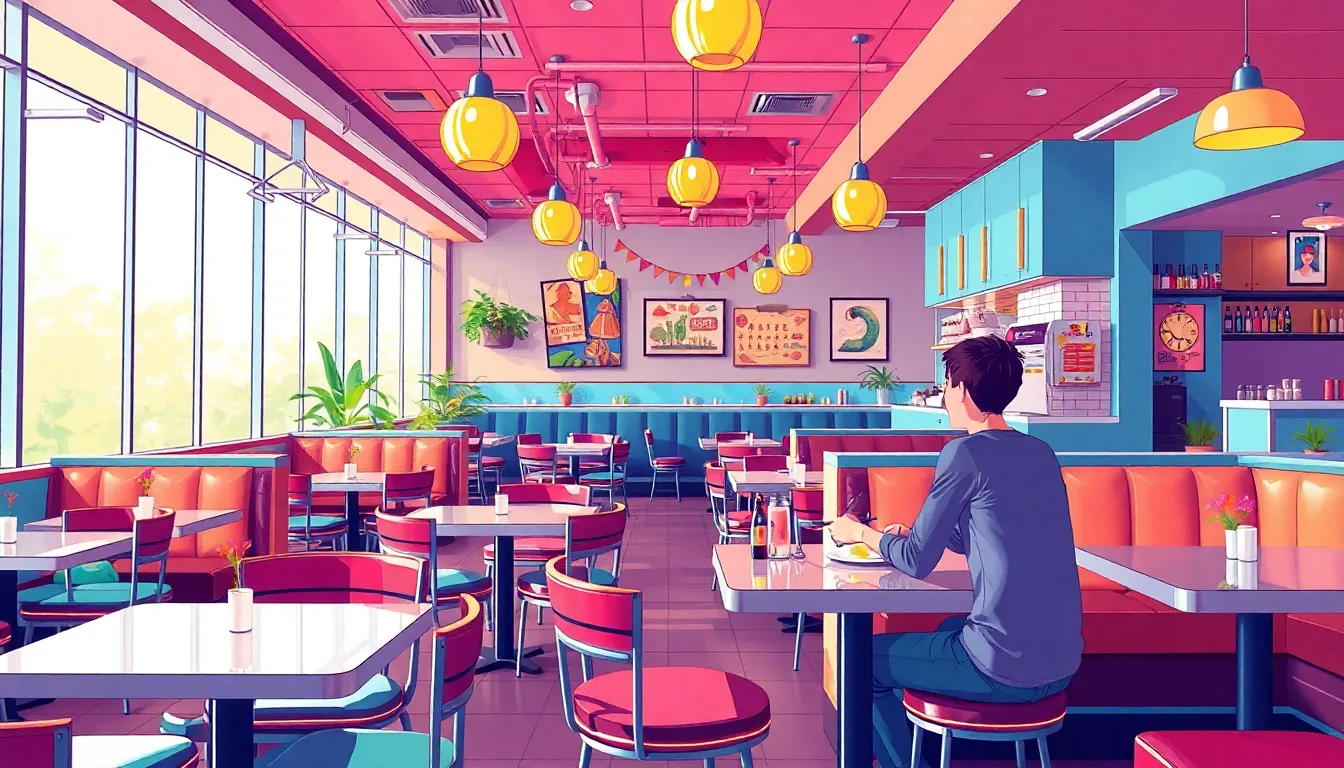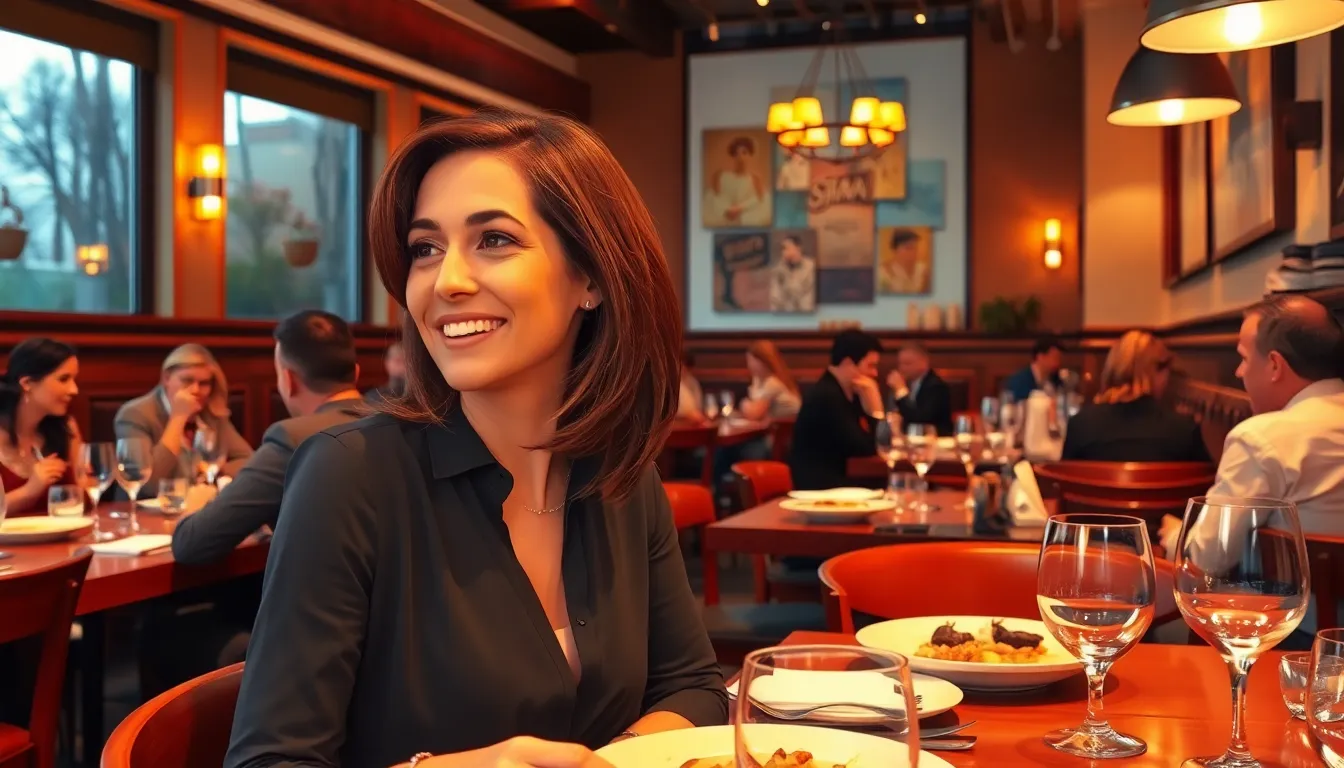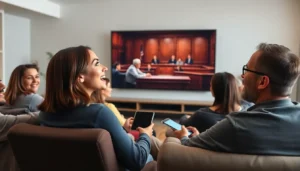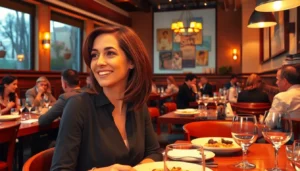Table of Contents
ToggleIn the bustling world of dining, first impressions are everything. A restaurant’s design can make or break the experience, transforming a simple meal into a memorable adventure. Imagine stepping into a space that’s not just about food but also about ambiance, creativity, and a dash of personality. Restaurant design concepts are the secret ingredients that can turn an ordinary eatery into a culinary hotspot.
From cozy nooks that invite intimate conversations to vibrant open spaces that buzz with energy, the right design can elevate a dining experience to new heights. It’s not just about aesthetics; it’s about creating an atmosphere that keeps customers coming back for more. Dive into the world of innovative restaurant design concepts and discover how the perfect blend of style and function can tantalize taste buds and ignite imaginations. After all, who wouldn’t want to feast in a place that feels like a feast for the eyes too?
Restaurant Design Concepts Overview
Restaurant design plays a vital role in creating memorable dining experiences. Effective design elements can significantly influence customer engagement and satisfaction.
Importance of Restaurant Design
Restaurant design impacts both customer perception and behavior. A well-thought-out design fosters a welcoming atmosphere that encourages diners to return. Interiors that reflect the restaurant’s theme enhance storytelling and establish brand identity. Ambiance influences emotions, turning meals into lasting memories. Consumers often choose eateries based not only on food quality but also on the overall environment.
Key Elements of Effective Design
Effective restaurant design incorporates several key elements. Space utilization maximizes seating arrangements while providing comfort. Lighting enhances mood and highlights architectural features, creating an intimate or vibrant atmosphere, depending on the concept. Color schemes communicate brand identity and influence emotions, with warm tones promoting comfort and cool tones offering sophistication. Functional layouts facilitate efficient service and smooth customer flow. Lastly, unique decor elements can differentiate a restaurant from its competitors, giving it character and visual appeal.
Types of Restaurant Design Concepts

Various restaurant design concepts cater to different dining experiences. Each concept brings unique elements that contribute to ambiance and customer satisfaction.
Casual Dining
Casual dining establishments focus on comfort and approachability. Restaurants in this category often feature welcoming decor, relaxed seating arrangements, and a diverse menu. Elements such as open layouts and vibrant color schemes create an inviting atmosphere. Diners frequently enjoy a leisurely meal while engaging in conversation. Uniformity in branding plays a crucial role in making the space recognizable. Thoughtful lighting complements decor, enhancing overall mood and experience.
Fine Dining
Fine dining reflects elegance and sophistication. Establishments prioritize high-quality ingredients and exceptional service, creating an intimate setting for diners. These restaurants often employ dim lighting, lavish decor, and intricate table settings. Seating arrangements embrace privacy, allowing patrons to savor their meals without distraction. Attention to detail becomes evident in every aspect, reinforcing the restaurant’s brand identity. Unique architectural designs often distinguish fine dining venues, making them memorable.
Fast Casual
Fast casual restaurants combine the efficiency of quick service with the quality of casual dining. Customers often enjoy a relaxed environment with modern decor and comfortable seating. The focus on freshness and customizable menu items attracts a diverse clientele. Additionally, open kitchens enhance transparency, allowing diners to observe food preparation. Colorful designs reflect the brand’s identity and appeal to a younger audience. By merging convenience with quality, fast casual concepts cater to on-the-go lifestyles without sacrificing taste.
Food Trucks
Food trucks offer flexibility and creativity in restaurant design. Mobility allows these establishments to reach diverse locations, appealing to various crowds. Unique branding and vibrant artwork often adorn the exterior, attracting customers from afar. The interior is typically compact, prioritizing functionality while ensuring efficient service. Menus usually feature specialty items, encouraging diners to try something new. By embracing a casual and fun dining experience, food trucks carve their niche in the culinary landscape.
Elements of Design
Key elements of design greatly influence the overall atmosphere of a restaurant, impacting customer experience and satisfaction. These components include layout and flow, lighting and acoustics, and color schemes and materials.
Layout and Flow
Functional layouts maximize comfort and efficiency in restaurant spaces. An intuitive design guides guests smoothly from the entrance to their tables. Thoughtful placement of seating fosters social interaction while ensuring adequate space for staff movement. Clear pathways enhance the dining experience, reducing congestion during peak hours.
Lighting and Acoustics
Lighting profoundly affects mood and ambience within a restaurant. Warm, soft lighting creates intimacy, ideal for fine dining, while brighter options suit lively environments like fast casual eateries. Acoustic considerations also play a role; sound-absorbing materials can reduce noise levels, encouraging conversation and enhancing comfort.
Color Schemes and Materials
Color choices communicate a restaurant’s brand identity and set the tone for the dining experience. Rich, warm colors promote a cozy feel, while bright hues can energize guests in vibrant settings. Material selection equally matters; durable yet aesthetically pleasing materials establish a memorable atmosphere while maintaining practical usability.
Trends in Restaurant Design
Trends in restaurant design reflect evolving consumer preferences and environmental considerations. They showcase creativity and innovation.
Sustainable Design
Sustainable design emphasizes eco-friendly materials and energy-efficient solutions. Restaurants incorporate reclaimed wood, recycled metals, and low-VOC paints to create inviting spaces while minimizing their carbon footprint. Incorporating greenery through indoor plants and vertical gardens enhances ambiance and air quality. Energy-efficient lighting reduces utility costs and supports environmental goals. Sustainable practices also attract environmentally conscious diners, contributing to a restaurant’s appeal and brand identity.
Technology Integration
Technology integration enhances the dining experience through convenience and efficiency. Many restaurants use contactless menus accessed via smartphones, streamlining ordering and payment processes. Digital displays can showcase seasonal specials or promotions, capturing customer attention dynamically. Some establishments employ kitchen display systems to optimize food preparation and minimize wait times. Smart reservation systems improve table management and enhance customer satisfaction through personalized experiences.
Outdoor Dining Spaces
Outdoor dining spaces expand a restaurant’s capacity and appeal, especially during pleasant weather. Roofed patios and landscaped gardens create inviting environments for al fresco dining. Enhancements such as heaters and fans ensure year-round usability. Unique decor elements like string lights and fire pits create a cozy atmosphere, attracting guests seeking a memorable experience. Outdoor spaces also enable restaurants to leverage social media by showcasing beautiful settings that encourage sharing.
The right restaurant design can transform the dining experience into something extraordinary. By focusing on ambiance and functionality restaurants can create inviting spaces that resonate with customers. Whether it’s through cozy seating arrangements or vibrant decor each element plays a crucial role in shaping perceptions and enhancing satisfaction.
As trends evolve the integration of sustainable practices and technology will continue to redefine how restaurants approach design. Embracing these concepts not only attracts diners but also builds lasting loyalty. Ultimately a well-designed restaurant is more than just a place to eat; it’s an experience that leaves a lasting impression.




